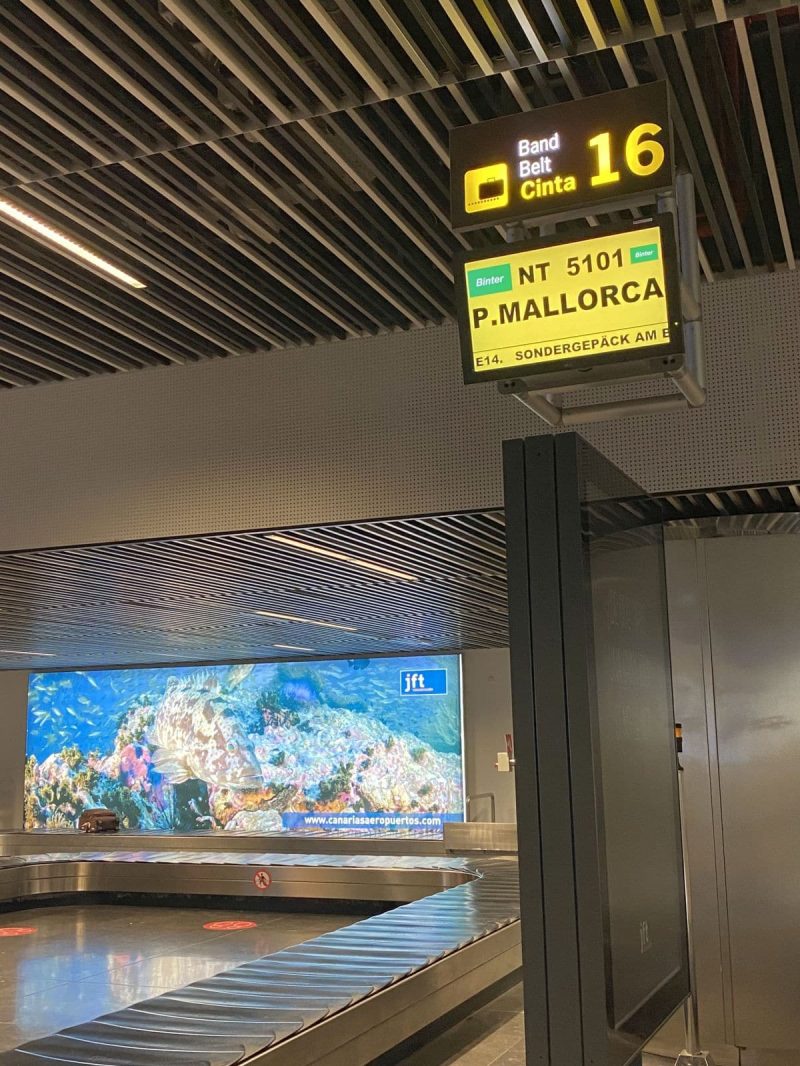There's nothing more frustrating than standing at the baggage carousel after a long flight and realizing your suitcase hasn't turned up. Losing luggage can cause significant inconvenience, but there are certain steps passengers can take to resolve the issue and receive appropriate compensation from the airline. This article explains what to do if your suitcase is lost, the limits of liability and how to make replacement purchases.
Losing a suitcase at baggage claim can be a frustrating experience, but by understanding airline liability limits and following these steps, passengers can better manage the situation. The important thing is to take the right actions, adequately document replacement purchases and maintain dialogue with the airline in order to receive appropriate compensation. Keep in mind that each airline may have different policies, so it's advisable to find out about the specific procedures before you travel.
Step 1: Immediate action at baggage claim
As soon as you find that your suitcase has not arrived at the baggage carousel, you should proceed immediately to the lost and found counter or the designated lost baggage counter. There you report the loss of your suitcase and fill out the appropriate form. Make sure you have all the information about your luggage ready, including flight details and suitcase description. Danger! The report at the Lost and Found counter alone is not sufficient. In order to be able to make claims for compensation and/or liability, it is also necessary for a complaint to be made to the airline. This should be reimbursed in writing, i.e. at least by e-mail, fax or via a special contact form from the airline, within a maximum of one week.
Step 2: Reimbursement limits and airline liability
It is important to understand that airlines have certain liability limits in the event of lost luggage. Under the 1999 Montreal Convention, the limit of liability for international flights is currently approximately 1.288 Special Drawing Rights (SDR) per passenger, which equates to approximately €1.500. For domestic flights, liability limits may vary by country. Note that this is the maximum amount that can be reimbursed and that the actual amount depends on various factors.
Step 3: Check your travel insurance
Before taking any further steps, it is important to review your travel insurance policy. Some insurance companies cover loss of or damage to luggage and offer additional compensation. Make sure you understand the terms of your insurance and communicate with your insurance company if necessary.
Step 4: Replacement Purchases and Documentation
If your suitcase doesn't show up on time, most airlines have a replacement policy that allows you to buy basic necessities like clothing and toiletries. Check with the Lost and Found desk for the specific policy and, if applicable, get a replacement money provided by the airline. It is important to keep all receipts as you will need to present them for future refund claims. We recommend making scans, photos or copies.
Step 5: Communication with the airline
Maintain regular contact with the airline to check the status of the search for your suitcase. Make sure you have all relevant information about your flight and suitcase ready to speed up the process. Ask for a reference number or contact to use if you have any questions. If the airline does not respond within a period of time that is acceptable to you, you should specify your claims for compensation (current value of the suitcase and its contents as well as any replacement purchases that may be necessary). Document everything as precisely as possible with invoices or receipts. For reasons of proof, you should send your claim to the airline by registered mail, enclosing copies of the invoices or receipts. In practice, it has been shown that e-mails or transmissions of contact forms are always “lost” if the airline could be obliged to pay.
Step 6: Tracking the suitcase
Most airlines have a baggage tracking system that allows you to check the status of your suitcase online. Use this resource to find out if your suitcase has been found and where it is located. If it turns out that the suitcase cannot be found, it is important to keep in touch with the airline and document the loss.
Step 7: Submit refund claims
Once it has been determined that your suitcase cannot be found, it is time to submit your claim to the airline. Provide all required documents including baggage loss form, receipts for replacement purchases, flight details and insurance documents. Note that airlines may have different procedures, so it is advisable to check their policies beforehand.
Step 8: Negotiations and Compensation
Once your refund claims have been submitted, the airline will review the case and offer you compensation if necessary. Note that the amount of compensation depends on several factors, including the value of your lost luggage, the age of the items, and the terms of your travel insurance. In some cases, negotiation may be necessary to obtain fair compensation.





 trail (for them it's free to use)
trail (for them it's free to use)
Comment